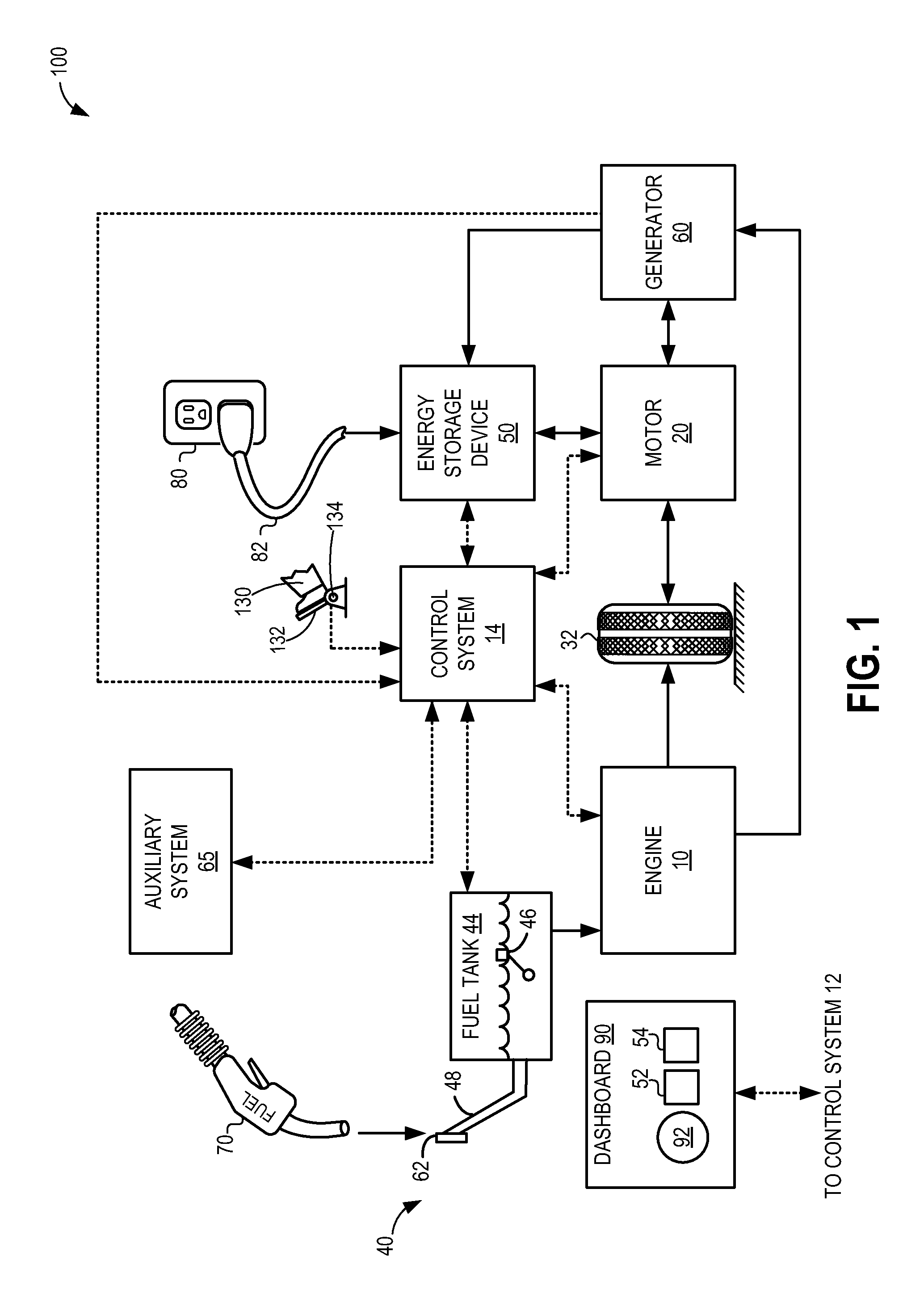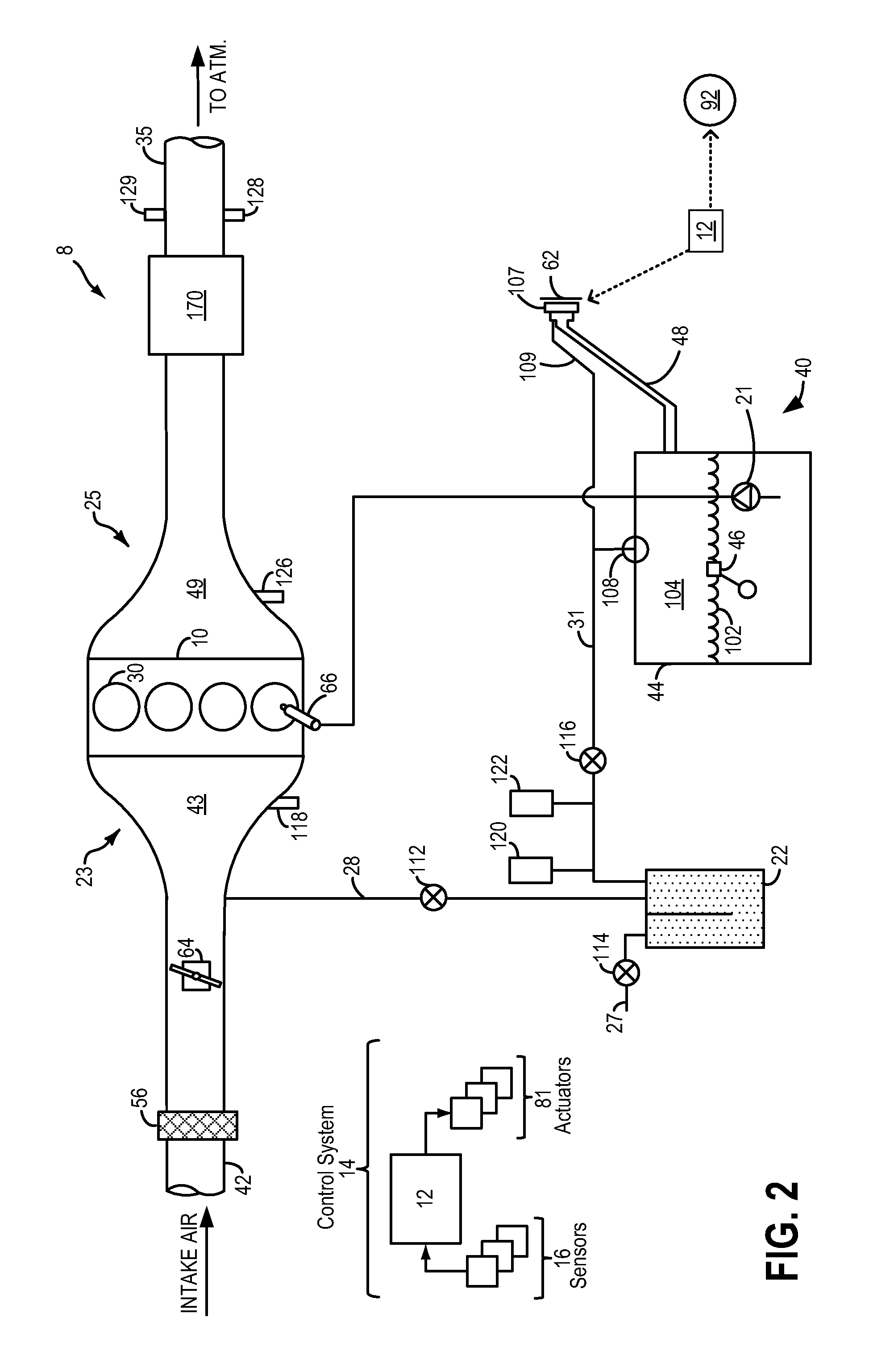Refueling detection method
a detection method and fuel tank technology, applied in the direction of machines/engines, electrical control, instruments, etc., can solve the problem of few opportunities to purge fuel tank vapors to the engine, and achieve the effects of reducing vehicle emissions, reducing pressure out of the fuel tank, and high fidelity
- Summary
- Abstract
- Description
- Claims
- Application Information
AI Technical Summary
Benefits of technology
Problems solved by technology
Method used
Image
Examples
Embodiment Construction
[0013]Evaporative emission (EVAP) system diagnostic leak detection tests that monitor fuel system pressure and / or vacuum have been used. EVAP diagnostic leak detection tests may be conducted during engine-off conditions because fuel system pressure disturbances, such as fuel slosh, arising from regular vehicle operation may be absent. A typical diagnostic leak detection test may seal the EVAP system by closing the canister vent valve (CVV) and then monitor changes in fuel system vacuum and / or pressure to determine system integrity when the engine is off. However, if refueling is started during an engine-off diagnostic leak detection test, the ensuing increase in fuel system pressure due to the dispensed fuel may confound the results of the diagnostic leak detection test. Furthermore, the buildup in fuel system pressure may prematurely shutoff the fuel dispensing pump.
[0014]Additionally, during refueling of a fuel tank, a fuel door may be maintained locked until sufficient depressuri...
PUM
 Login to View More
Login to View More Abstract
Description
Claims
Application Information
 Login to View More
Login to View More - R&D
- Intellectual Property
- Life Sciences
- Materials
- Tech Scout
- Unparalleled Data Quality
- Higher Quality Content
- 60% Fewer Hallucinations
Browse by: Latest US Patents, China's latest patents, Technical Efficacy Thesaurus, Application Domain, Technology Topic, Popular Technical Reports.
© 2025 PatSnap. All rights reserved.Legal|Privacy policy|Modern Slavery Act Transparency Statement|Sitemap|About US| Contact US: help@patsnap.com



